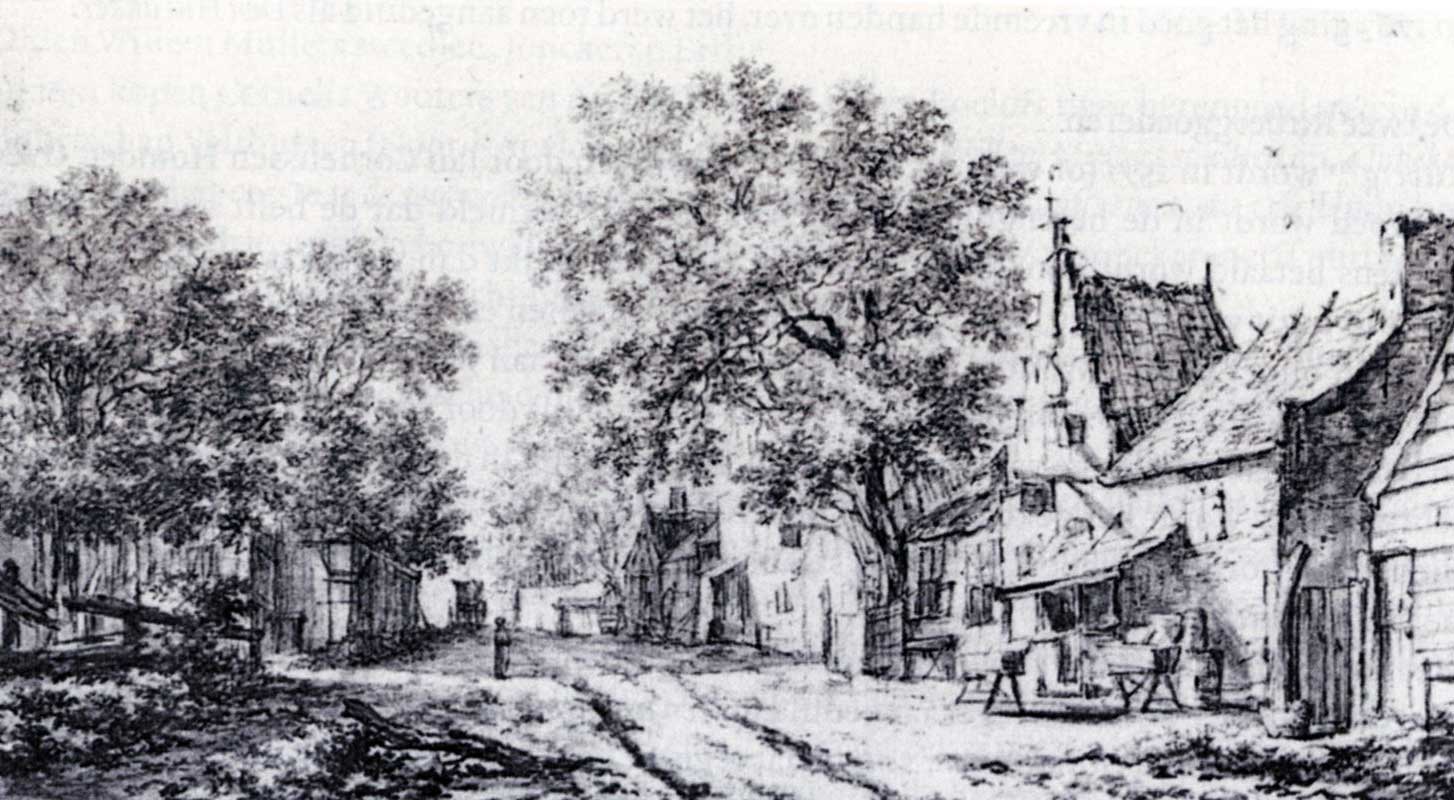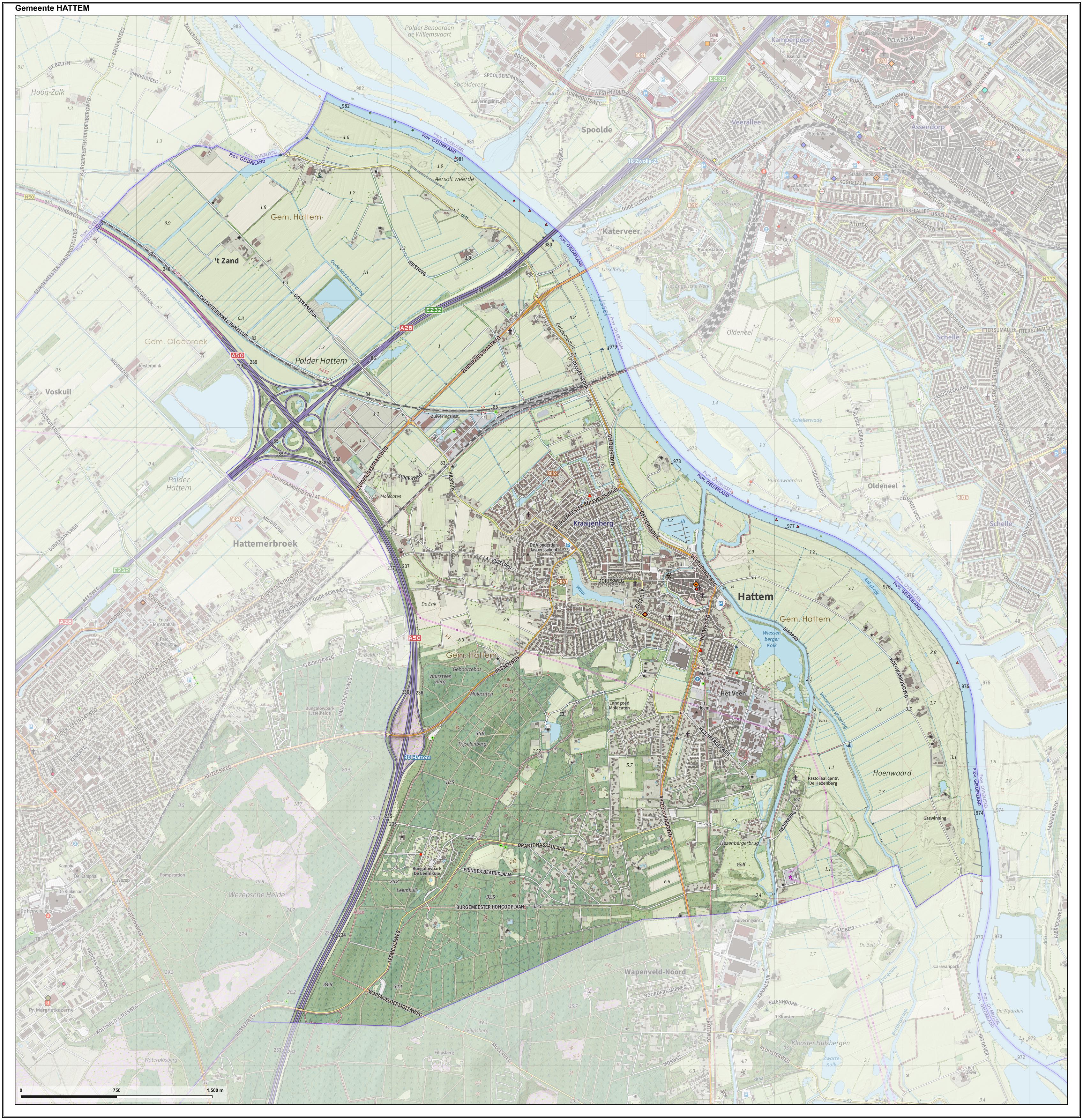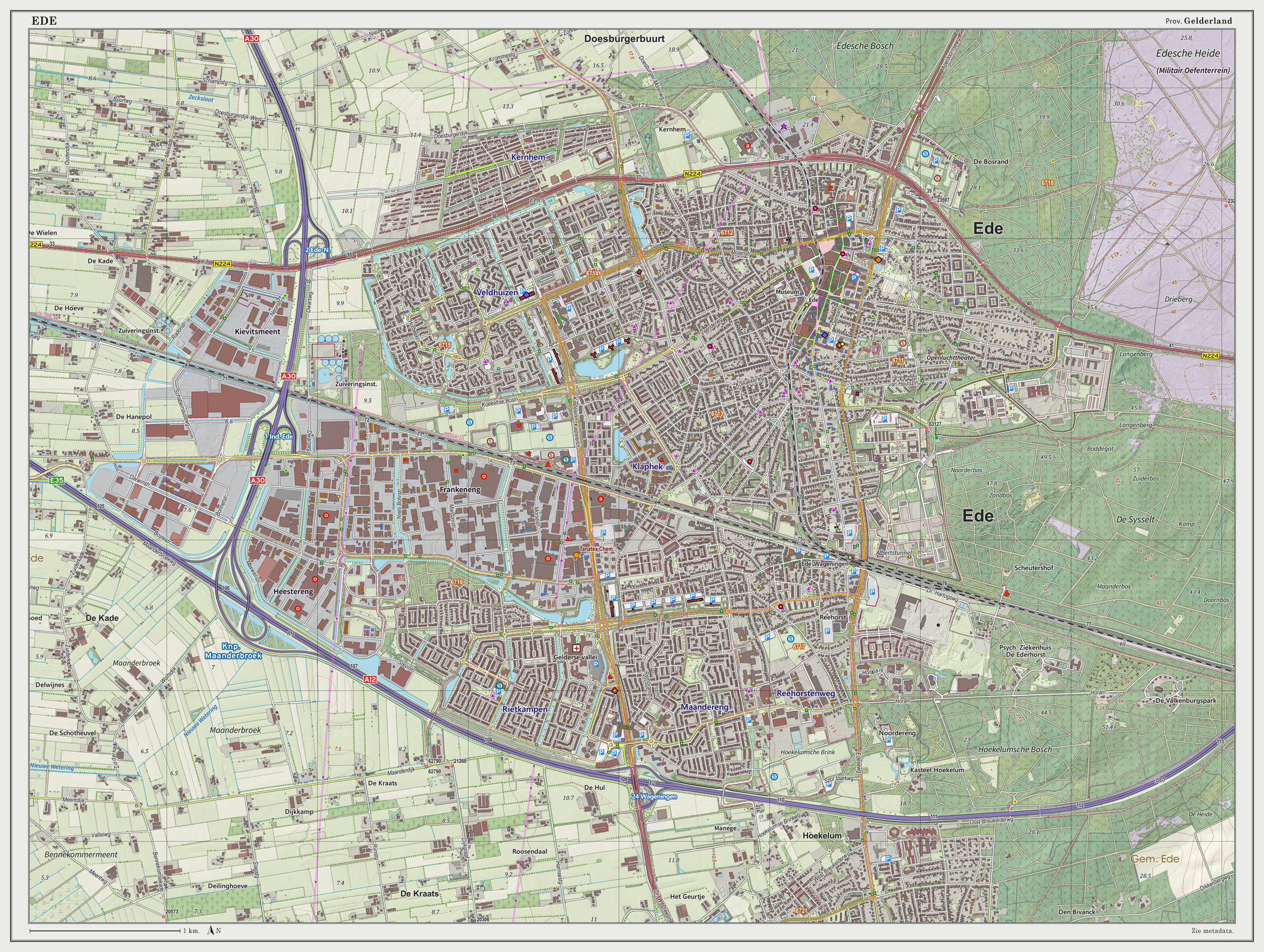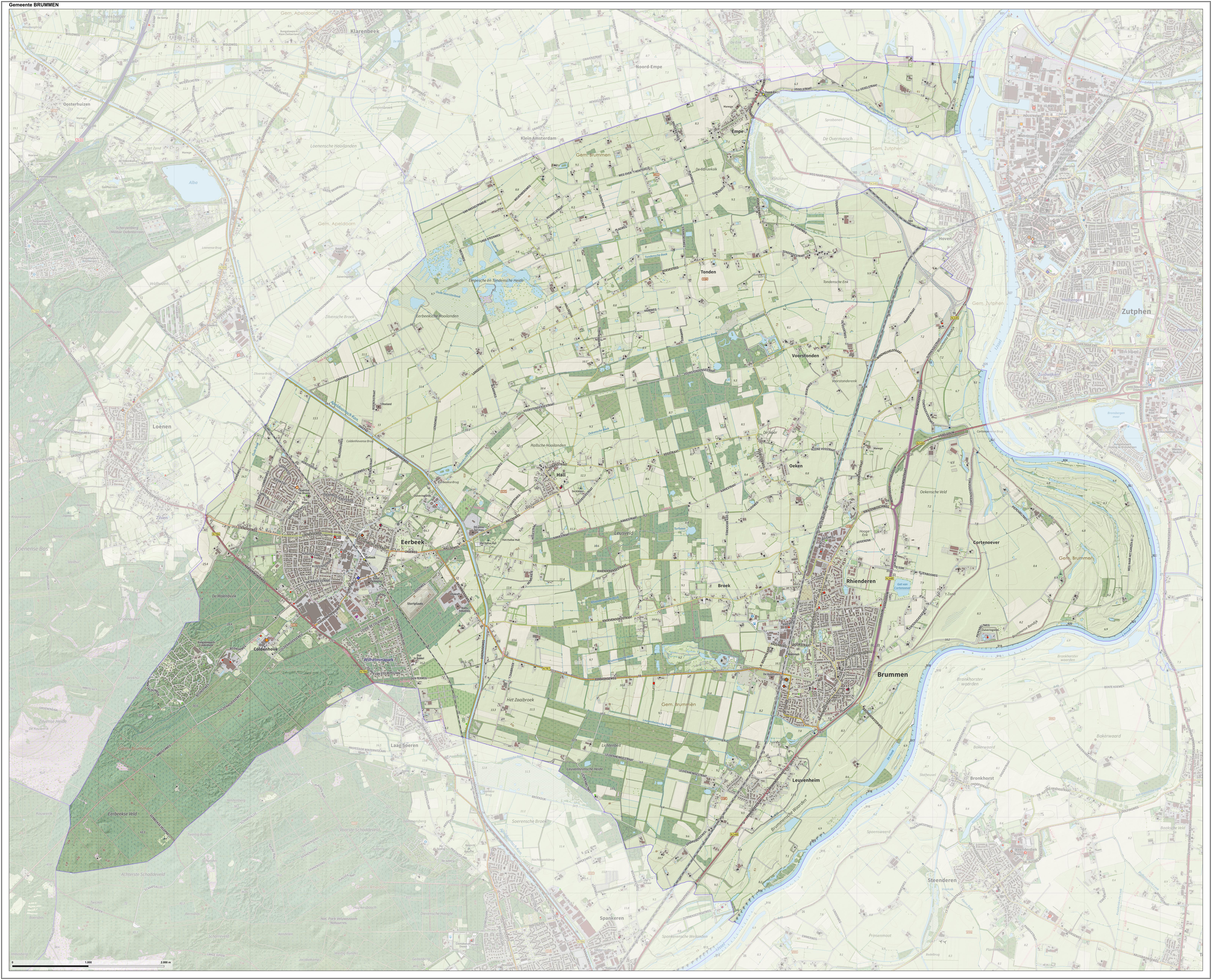|
Veluwe
The Veluwe () is a forest-rich ridge of hills (1100 km2) in the province of Gelderland in the Netherlands. The Veluwe features many different landscapes, including woodland, heath, some small lakes and Europe's largest sand drifts. The Veluwe is the largest push moraine complex in the Netherlands, stretching 60 km from north to south, and reaching heights of up to 110 metres. The Veluwe was formed by the Saalian glacial during the Pleistocene epoch, some 200,000 years ago. Glaciers some 200 metres thick pushed the sand deposits in the Rhine and Maas Delta sideways, creating the hills which now form most of the Veluwe. Because the hills are made of sand, rain water disappears rapidly, and then it flows at a depth of tens of metres to the edges where it reaches the surface again. Originally the Veluwe was surrounded by a string of swamps, heavily populated with game such as deer and wild boar because these areas offered rich vegetation to feed on. Since the 1990s many p ... [...More Info...] [...Related Items...] OR: [Wikipedia] [Google] [Baidu] |
Veluwe 5
The Veluwe () is a forest-rich ridge of hills (1100 km2) in the province of Gelderland in the Netherlands. The Veluwe features many different landscapes, including woodland, heath, some small lakes and Europe's largest sand drifts. The Veluwe is the largest push moraine complex in the Netherlands, stretching 60 km from north to south, and reaching heights of up to 110 metres. The Veluwe was formed by the Saalian glacial during the Pleistocene epoch, some 200,000 years ago. Glaciers some 200 metres thick pushed the sand deposits in the Rhine and Maas Delta sideways, creating the hills which now form most of the Veluwe. Because the hills are made of sand, rain water disappears rapidly, and then it flows at a depth of tens of metres to the edges where it reaches the surface again. Originally the Veluwe was surrounded by a string of swamps, heavily populated with game such as deer and wild boar because these areas offered rich vegetation to feed on. Since the 1990s many p ... [...More Info...] [...Related Items...] OR: [Wikipedia] [Google] [Baidu] |
Arnhem
Arnhem ( or ; german: Arnheim; South Guelderish: ''Èrnem'') is a city and municipality situated in the eastern part of the Netherlands about 55 km south east of Utrecht. It is the capital of the province of Gelderland, located on both banks of the rivers Nederrijn and Sint-Jansbeek, which was the source of the city's development. Arnhem had a population of 163.972 on 1 December 2021, which made it one of the larger cities of the Netherlands. The municipality is part of the Arnhem–Nijmegen metropolitan area, which has a combined number of 774,506 inhabitants on 31 January 2022. Arnhem is home to the Hogeschool van Arnhem en Nijmegen, ArtEZ Institute of the Arts, Netherlands Open Air Museum, Airborne Museum 'Hartenstein', Royal Burgers' Zoo, NOC*NSF and National Sports Centre Papendal. The north corner of the municipality is part of the Hoge Veluwe National Park. It is approximately in area, consisting of heathlands, sand dunes, and woodlands. History Early hi ... [...More Info...] [...Related Items...] OR: [Wikipedia] [Google] [Baidu] |
Gelderland
Gelderland (), also known as Guelders () in English, is a province of the Netherlands, occupying the centre-east of the country. With a total area of of which is water, it is the largest province of the Netherlands by land area, and second by total area. Gelderland shares borders with six other provinces ( Flevoland, Limburg, North Brabant, Overijssel, South Holland and Utrecht) and the German state of North Rhine-Westphalia. The capital is Arnhem (pop. 159,265); however, Nijmegen (pop. 176,731) and Apeldoorn (pop. 162,445) are both larger municipalities. Other major regional centres in Gelderland are Ede, Doetinchem, Zutphen, Harderwijk, Tiel, Wageningen, Zevenaar, and Winterswijk. Gelderland had a population of 2,084,478 as of November 2019. It contains the Netherlands's largest forest region (the Veluwe), the Rhine and other major rivers, and a significant amount of orchards in the south ( Betuwe). History Historically, the province dates from states of th ... [...More Info...] [...Related Items...] OR: [Wikipedia] [Google] [Baidu] |
Apeldoorn
Apeldoorn (; Dutch Low Saxon: ) is a municipality and city in the province of Gelderland in the centre of the Netherlands. It is located about 60 km east of Utrecht, 60 km west of Enschede, 25 km north of Arnhem and 35 km south of Zwolle. The municipality of Apeldoorn, including villages like Beekbergen, Loenen, Ugchelen and Hoenderloo, had a population of 165,525 on 1 December 2021. The western half of the municipality lies on the Veluwe ridge, with the eastern half in the IJssel valley. The city of Apeldoorn The oldest known reference to Apeldoorn, then called Appoldro, dates from the 8th century. The settlement came into being at the point where the old road from Amersfoort to Deventer crossed that from Arnhem to Zwolle. A 1740 map refers to it as A''pp''eldoorn.Stenvert, R. et al. (2000). ''Monumenten in Nederland: Gelderland'', p. 14 and 68–77. Zwolle: Waanders Uitgevers. Close by is the favourite country-seat of the royal family of the Netherlands c ... [...More Info...] [...Related Items...] OR: [Wikipedia] [Google] [Baidu] |
Ermelo, Netherlands
Ermelo (, Dutch Low Saxon: ''Armelo'' or ''Armel'') is a municipality and town in the Netherlands; found within Gelderland province and the forest-rich Veluwe area. The population was . Etymology ''Ermelo'' comes from ''lo'', meaning "woods" M. Gysseling (1960), Toponymisch Woordenboek van België, Nederland, Luxemburg, Noord-Frankrijk en West-Duitsland (vóór 1226)', blz. 327, George Michiels N.V., Tongeren and ''irmin'' for which several explanations are given. Some of those are "great", "divine" or it refers to an old Germanic god called Irmin. Population centres History The town has been known to exist since at least 855, when the name ''Irminlo'' first appeared in a legal document. Human presence in the area goes back further however, with many archaeological finds of the Bell-Beaker culture having been made in the area. For a long time the town most likely consisted of little more than a few farms and some other buildings like a windmill and a church and it didn't ... [...More Info...] [...Related Items...] OR: [Wikipedia] [Google] [Baidu] |
Nunspeet
Nunspeet () is a municipality and town in the central Netherlands. It has been an agricultural site since prehistoric times. The municipality contains a number of villages, namely Hulshorst, Elspeet, and Vierhouten. Nunspeet has a vivid historical foundation, called Nuwenspete. In 1972 Nunspeet became a separate municipality after having been part of Ermelo before. Recreation Nunspeet is a popular tourist area because it is surrounded by woods, holiday resorts and the former sea. Nunspeet has a town center which is located around the main market square. Nunspeet is situated on the shore of the Veluwemeer (''Veluwe lake)'' which makes it popular for water leisure. There is also a small lake called "de Zandenplas" which is a popular recreational area in wooded sandy terrain. Other tourist attractions include the weekly market and the town festival, ''De nacht van Nunspeet'' (Nunspeet Night) and the ''Eibertjesmarkt'' (Eibertjes market), as well as an annual sporting event ca ... [...More Info...] [...Related Items...] OR: [Wikipedia] [Google] [Baidu] |
Harderwijk
Harderwijk (; Dutch Low Saxon: ) is a municipality and city of the Netherlands. It is served by the Harderwijk railway station. Its population centres are Harderwijk and Hierden. Harderwijk is on the western boundary of the Veluwe. The southeastern half of the municipality is largely forests. History Harderwijk received city rights from Count Otto II of Guelders in 1231. A defensive wall surrounding the city was completed by the end of that century. The oldest part of the city is near where the streets Hoogstraat and Grote Poortstraat now are. Around 1315 the city was expanded southwards, which included the construction of what is now called the Grote Kerk (Great Church). A second, northward expansion took place around 1425. Particularly along the west side of town, much of the wall still exists but often not in entirely original form. That also goes for the only remaining city gate, the Vischpoort (Fish Gate). Between 1648 and 1811, the University of Harderwijk operate ... [...More Info...] [...Related Items...] OR: [Wikipedia] [Google] [Baidu] |
Hattem
Hattem () is a municipality and a town in the eastern Netherlands. The municipality had a population of in . The municipality includes the hamlet of 't Zand. Name origin The name “Hattem” is a typical farmyard name. The exact origin of “Hattem” is yet unclear. In general two explanation exist. Hattem would be the ‘heem’ (home) of a people who belong to the tribe of Chattuarii (or Hattuarii or Hatten). A second origin could refer to the leader of a people under the leader Hatto. This fits with the fact that a lot of farmyard names are deduced from persons names. History A document referring to Hattem is found is dated around 800. This document is the Codex Laureshamensis, in which the settlement Hattem is mentioned because two farmhouses in this place are donated to the Lorsch abbey. Established as parish Despite this early statement, no church or chapel was built in Hattem. In 1176 Hattem became a parish (‘kerspel’). The chapel, measuring 17,5 by 9,5 meter, was ... [...More Info...] [...Related Items...] OR: [Wikipedia] [Google] [Baidu] |
Ede, Netherlands
Ede () is a municipality and a town in the centre of the Netherlands, in the province of Gelderland. Ede had 119,186 inhabitants. Population centres Community: * Bennekom * De Klomp * Deelen * Ede (town) * Ederveen * Harskamp * Hoenderloo * Lunteren * Otterlo ( Kröller-Müller Museum) * Wekerom The village of Ede Location The village itself is situated halfway between the larger cities of Arnhem and Utrecht, with direct rail and road connections to both cities. There are no connections to any water nearby; however, there also is a direct road connection to the city of Wageningen which hosts a small industrial port on the river Rijn and a direct road and rail connection to the city of Arnhem, which features a larger port at a greater distance. The environment is clean and green due to the fact that Ede is partly built in a forest and partly on the central Dutch plains in the national park called Nationaal Park "De Hoge Veluwe". Economy Economically, the town ... [...More Info...] [...Related Items...] OR: [Wikipedia] [Google] [Baidu] |
Putten
Putten () is a municipality and town in the province of Gelderland, Netherlands. It had a population of in . It is located in the coastal area of the old Zuiderzee (Southern Sea). To the east of Putten lies the Veluwe, the biggest national park of the Netherlands. To the north, east and west, Putten is surrounded by farmlands. Population centres History Until World War II The oldest official paper in which Putten is mentioned dates back to 855. Small settlements, however, were already in existence during the Roman era. After the founding of the present main church in the 10th century, the community became the center of several smaller settlements. Parts of Nijkerk and Voorthuizen also became part of the Putten area, until in 1530 Nijkerk, and later also Voorthuizen, became independent communities. Until 1356, when a dyke was built, the coastline changed frequently, overflowing agricultural land in the west of Putten. The water was still a threat however, and the dyke bro ... [...More Info...] [...Related Items...] OR: [Wikipedia] [Google] [Baidu] |
Heath
A heath () is a shrubland habitat found mainly on free-draining infertile, acidic soils and characterised by open, low-growing woody vegetation. Moorland is generally related to high-ground heaths with—especially in Great Britain—a cooler and damper climate. Heaths are widespread worldwide but are fast disappearing and considered a rare habitat in Europe. They form extensive and highly diverse communities across Australia in humid and sub-humid areas where fire regimes with recurring burning are required for the maintenance of the heathlands.Specht, R.L. 'Heathlands' in 'Australian Vegetation' R.H. Groves ed. Cambridge University Press 1988 Even more diverse though less widespread heath communities occur in Southern Africa. Extensive heath communities can also be found in the Texas chaparral, New Caledonia, central Chile, and along the shores of the Mediterranean Sea. In addition to these extensive heath areas, the vegetation type is also found in scattered locations across ... [...More Info...] [...Related Items...] OR: [Wikipedia] [Google] [Baidu] |
Brummen
Brummen () is a municipality and a village in the eastern Netherlands. Brummen has a small railway station - Brummen railway station on the line between Zutphen and Arnhem. The village is situated about southwest of Zutphen, no farther than 1.5 km from the IJssel river. About two kilometers west of the village, on the edge of the Veluwe forest area, lies the Engelenburg resort, a castle-like house. It is in use as a hotel for golf players and has a 9-hole golf-link. Population centres * Brummen * Eerbeek (the largest village in the municipality) * Empe (which has a small railway station on the line Apeldoorn-Zutphen) * Hall - with an interesting chapel dating from the Middle Ages * Leuvenheim * Oeken * Tonden * Voorstonden Gallery File:Brummen, toren van de Oude of Sint-Pancratiuskerk RM11232 IMG 3828 2020-03-31 11.31.jpg, Brummen, churchtower (Oude or Sint-Pancratiuskerk) File:Hall, de Sint Ludgerkerk RM11251 IMG 3846 2020-03-31 12.10.jpg, Hall, church: Sint L ... [...More Info...] [...Related Items...] OR: [Wikipedia] [Google] [Baidu] |
%2C_Heerde%2C_Renderklippen.jpg)








.jpeg/1200px-Amrum_(187753235).jpeg)
